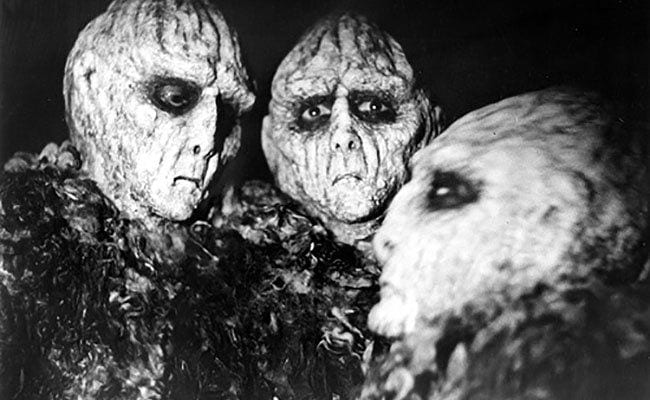
This cheap, creepy, simple TV movie was never forgotten by those who caught it because it effectively pares its fears into one compact little bone in the throat. The movie’s live wire, or raw nerve, or whatever you call the thing that makes it rise above its limits, is the feminist element of the disbelieved “hysterical woman”, someone poised between restless wifery and women’s lib.
In Nigel McKeand’s script, the fears and ills of the common housewife isn’t a subtext; it’s the text of most conversations. Sally Farnum (Kim Darby) opines that Alex (Jim Hutton) only married her “to be the perfect hostess” and that he concentrates all his energy on his career (translation: no sex). He’s patronizing, dismissive, or angry at the problems she’s supposedly causing with her irrational behavior.
In defense, she counter-patronizes. “I’m a perfect woman, stubborn and curious,” she says to the crotchety handyman (William Demarest), and instead of telling an irate husband she’s just seen monsters in the bathroom, she makes herself apologetic: “Alex, I think you’re right about this house. I think we should sell it.” He’s happy at her capitulation and comforts his little girl. She has to handle the men in their language.
The first person to take her seriously is best friend Joan (Barbara Anderson), who goes from reassuring Sally that she imagines everything and that all women are in the same bind to crisply refuting Alex’s hysteria. Too bad she’s useless in an emergency, but horror films of this period are structured on the inevitable resolution instead of the last-minute cop-out.
Like all haunted-house films, Don’t Be Afraid of the Dark is more or less conscious of what Stephen King called “real estate horror”, as the cost of renovations becomes an issue. In a real sense, it’s the house itself that wants to pull the neurotic woman into its maw, like Hill House in The Haunting of Hill House, and absorb her whole as a literal housewife; it’s the pay-off of her desire to claim this property and make a space for herself in the basement, while her husband would rather live in a city apartment.
Director John Newland was familiar with the trope of the disbelieved woman, as it was an element often featured in his classic anthology series One Step Beyond. He has no trouble handling it here, and although the movie shows its budget or lack thereof, he pulls it nimbly through its 75 minutes.
This TV movie arrived at last as a made-on-demand disc to cash in on its glossy 2011 remake. It even sports a bonus in the form of a jokey commentary by fans Steve Barton, Jeffrey Riddick and Sean Abley.
The remake, scripted by Guillermo del Toro and directed by Troy Nixey, bypasses the woman treated like a child and goes directly to having a child who feels unloved. It efficiently hits many of the same beats: gremlins under the house, handyman who knows too much, woman down the rabbit hole. Infected by Newland’s version as a boy, Del Toro had been trying to remake it for years and elements of it crop up in The Devil’s Backbone (2001) and Pan’s Labyrinth (2006).
I feel that the original film looks cheap and flat, yet it’s socially relevant with an air of sick dread, while the remake looks rich and stylish and has sympathy for a child’s fear, yet feels flat dramatically.

